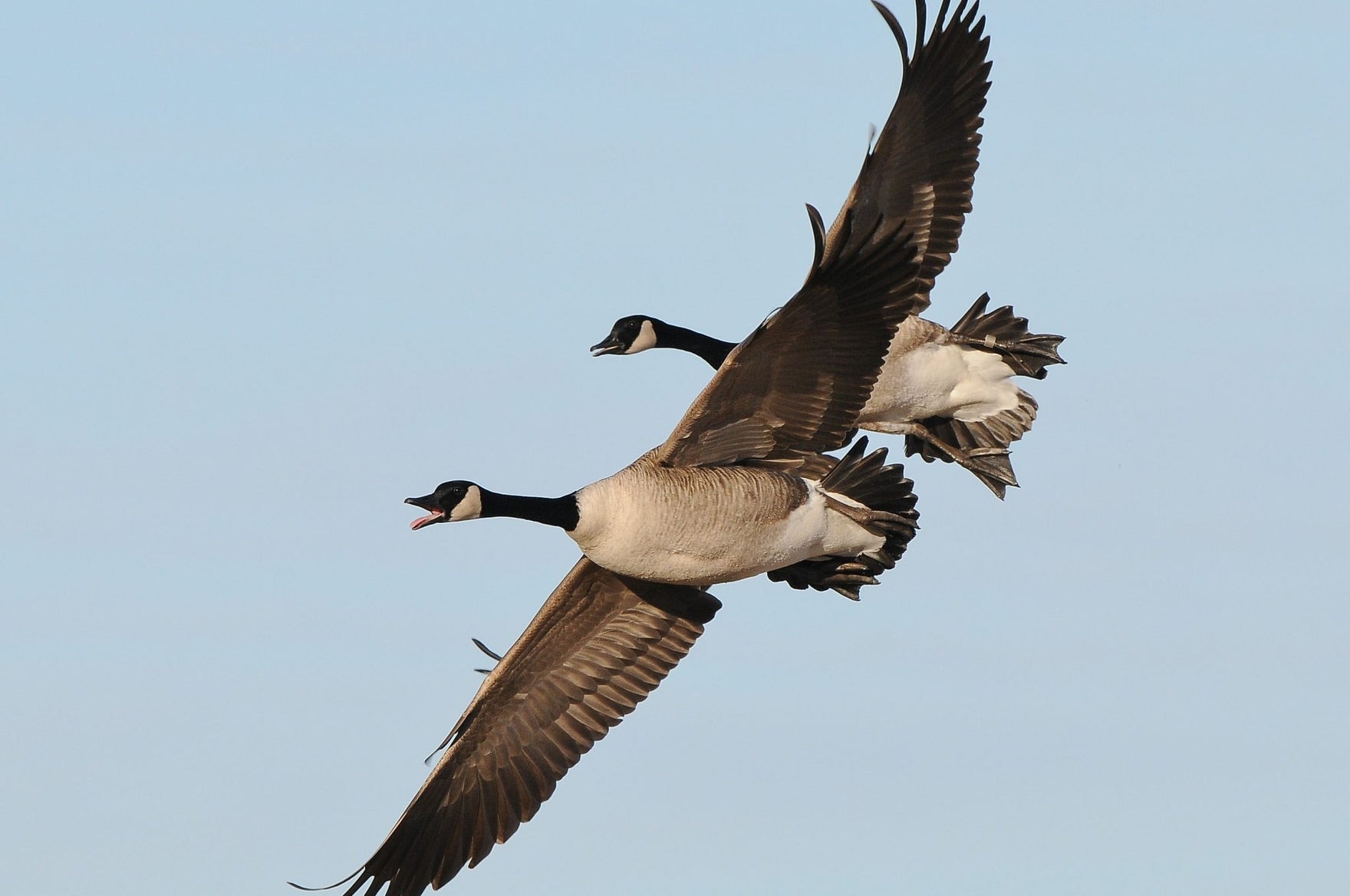Early-Season Canada Goose Hunting...
You and your buddies found the geese three days ago, hitting a freshly cut cornfield a few miles from town. Permission was secured as luckily you know the farmer and plans were laid for opening day. The decoys were set just right and blinds well brushed. As the sun crested the horizon the first faint calls of Canadas leaving the roost could be heard about a mile away. Excitement building, you and your party get ready to have geese floating in on cupped wings. You can see them now, a ragged bunch of about fifteen geese flying low on the horizon. Flags are waved and a few calls are uttered to swing them your way. But as the geese close the distance, they head north and east of you to another field across the road, the latest one cut by the farmer. As the sun climbs the remaining birds leave the roost and all head for the same spot and your pleading calls seemingly fall on deaf ears. Disappointed, you pick up early and plan to scout that afternoon to try and intercept the birds tomorrow.
What happened? As is often the case in the early season, the farmer continued to harvest new fields and the geese moved over to the fresh ground. Here are some tips to keep this from happening to you and what to do when you are in the right spot.
Scout right before the hunt
Half the battle of early-season success is finding the fields that are the latest ones harvested. As more crops come down the geese will have a lot of options and they tend to favor the freshest cut fields. So scouting early before the season or even a few days before the hunt is usually fruitless. Mainly what you are accomplishing is burning fuel. Find the birds the evening before if at all possible and set up exactly where they were after they leave for the night.
Where to focus your scouting
At this point, the birds are not going to be holding in large numbers on large waters. What you need to look for is clusters of small wetlands with fields close by. This is easier to accomplish now using internet options such as Google Earth to locate these areas. Resident Canadas will usually be found in family groups dispersed throughout these smaller ponds and sloughs and will feed out from there.
Smaller spreads and loosen them up
Because residents will be in family groups, set your spreads accordingly. You will have to experiment as well but try to set up your decoys to mimic exactly what you saw in scouting. Try placing groups 30 yards in front of your position and 30 yards behind in very loose formation. Sometimes the birds will want to stop short so then you need all the decoys behind you. Another good set is placing decoys as close as 10 yards in front of you and spread out up to 50 yards behind you. If it’s not working, change it!
More flagging, less calling
Your flags are your best friends early in the year. Resident family groups tend to call a lot less than migrating flocks so what they key on is motion They are not as social as migrators and they are not fighting for food so that cuts down on their need to be vocal as well. Sure you can throw a few clucks their way to gain their attention but loud hails are hardly necessary. Flag them until they are headed your way and get ready.
Bottom line
Local geese can be tough to pattern, but don't quit, stay after them and be persistent. Scout as often as possible, look for clusters of small waters and use smaller decoy numbers with plenty of space in between and early-season goose hunting success will follow.
Click Here to GEAR UP for Goose Hunting Season

